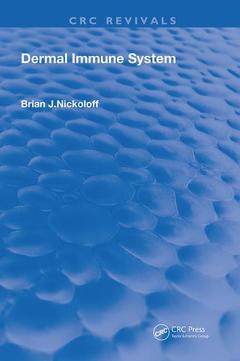Description
Dermal Immune System
Routledge Revivals Series
Coordinator: Nickoloff Brian J.
Language: English
Subjects for Dermal Immune System:
Keywords
Genus Capsicum; normal cutaneous homeostasis; HLA DR Antigen; dermal dendritic cells; Human Blood Dendritic Cells; skin diseases; Class Ii; dermal dendrocytes; Phorbol Myristate Acetate; skin-associated lymphoid tissues; Dermal Dendrocyte; Dendritic Cells; Dermal Dendritic Cells; Factor XIIIa; Normal Dermal Fibroblasts; UVB Radiation; Langerhans Cells; Dermal Macrophages; Epidermal Langerhans Cells; MC; Blood Dendritic Cells; MHC Class II; Veil Cell; APC; Basement Membrane Material; Interdigitating Reticulum Cells; Micro
Publication date: 02-2021
· 15.6x23.4 cm · Paperback
Publication date: 05-2019
· 15.6x23.4 cm · Hardback
Description
/li>Contents
/li>Readership
/li>Biography
/li>
Dermal Immune System is an excellent reference volume that should always be close at hand for immunologists, cell biologists, investigative dermatologists, pathologists, and clinicians involved in the care of patients with skin disease.




